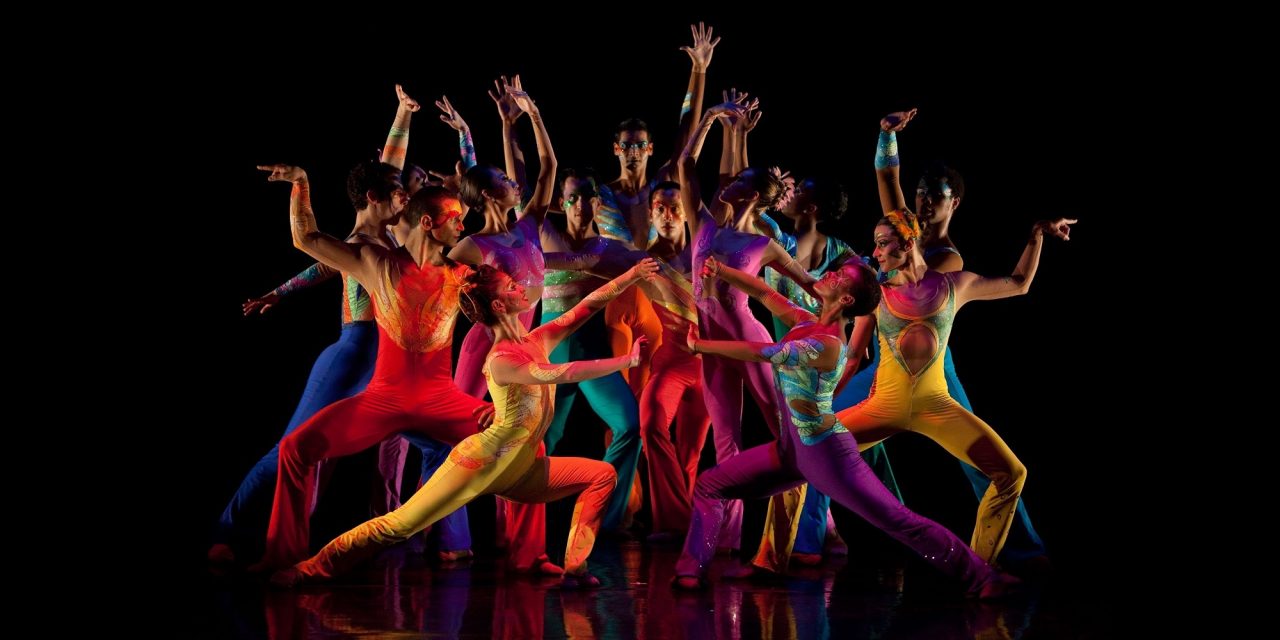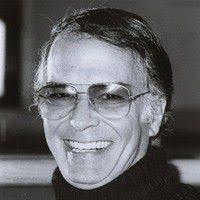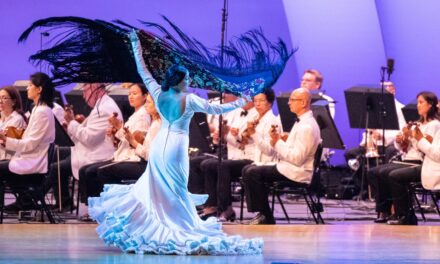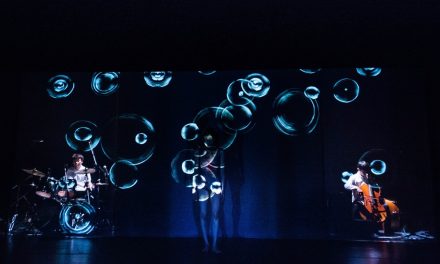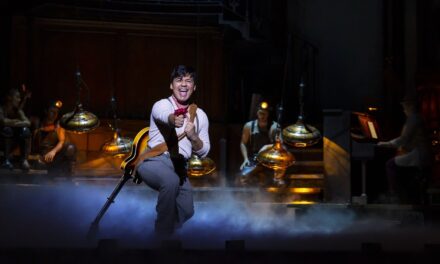Ballet Hispánico is one of the great small dance companies working in the United States today. Due to the pandemic they can no longer come together to create new work or perform live but luckily for us we can see archival footage of past repertoire by joining a Facebook “Choreographers and Cocktails” watch party. On Wednesday August 19th that is exactly what I did. Company CEO and Artistic Director Eduardo Vilaro introduced the nights’ piece, “Batucada Fantástica” by Choreographer Vincente Nebrada as well as hosting the “Cocktails” conversation, which followed.
An ode to “Carnival,” “Batucada Fantástica” was premiered in 1982 at The Joyce Theater and quickly rose to become a signature piece of the company. The boisterous, rhythmic and wild percussion of the Batucada Samba accompanies eight solos and the group finale. The energy of the score by Luciano Perrone however, rarely infuses the dance. Each dancer is technically excellent and often asked to perform difficult turning and floor-work sequences but the essence of the music seems to be left behind. What statement Nebrada is making by adding classical ballet, jazz, contemporary and even clowning into the overall idea of Carnival is not completely clear.
Each soloist is given work that sometimes feels confined and “in the style of” rather than fully embodying the primitive boldness of the percussive beat that so signifies Carnival. Often you can see the set-up or preparation for the next step so that the choreography has a spasmodic feeling and does not give the sense of one move flowing freely into another. Unfortunately the basic unitard costumes by Diana Ruettiger while showing the fine lines frequently achieved by the dancers did not enhance the movement or add to the free form fun expected with a Carnival atmosphere.
In the shadowy lighting by designer Roger Morgan, soloist number One (*dancers were not credited on the recording) begins with simple balletic movements occasionally interspersed with modern and Afro/Brazilian stylized jazz. It often feels flat though the dancer makes the most of what he is given. Building to a more energetic ending he executes a series of turns and impressive floor work that finally addresses the urgency of the music.
Among the eight solos, some are more successful than others. In Solo number Three for example, the subtle movement created a smooth fluidity that complemented the music perfectly. This assured soloist used his considerable technique with lightness and flair. Here a sense of joy came into play.
Lively and amusing also, were solos Number Four and Six which seemed to have more of a vaudevillian influence than Carnival which though fun to watch was puzzling in it’s concept. During the later discussion it came to light that the great clown Bill Irwin had been brought in to work with the dancers and his touch was clearly in evidence here. Contrived, yes but enjoyable.
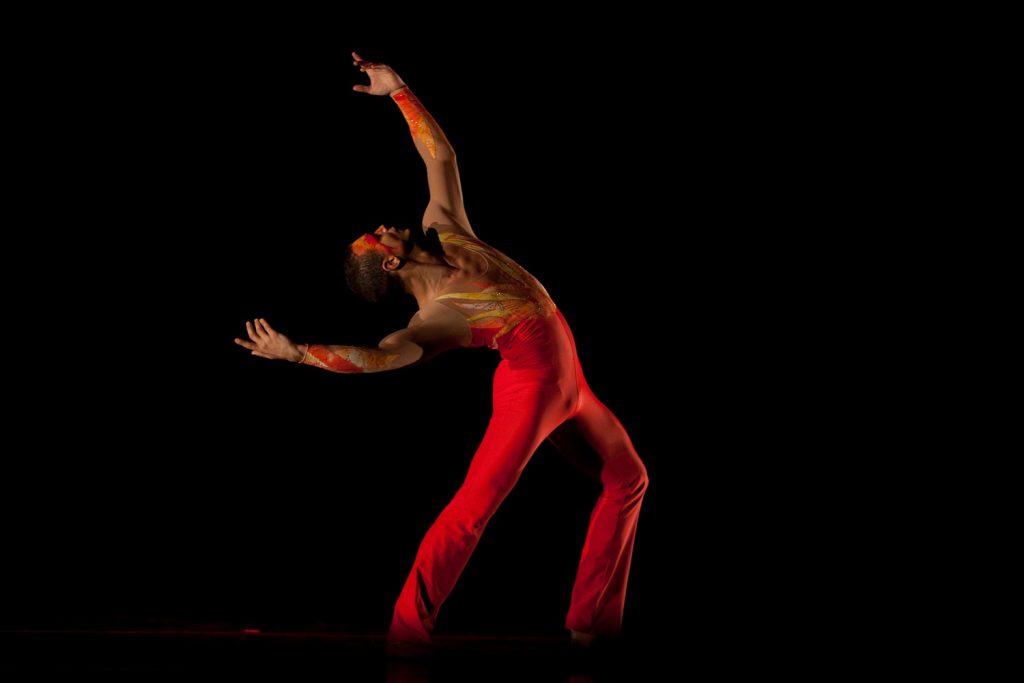
Ballet Hispánico – “Batucada Fantástica” choreography by Vicente Nebrada – Photo by Rosalie O’Connor
The more successful solo number Five relied heavily on ballet. This time the juxtaposition of the classical art next to the rowdy Batucada drums, whistles and noisemakers coalesced into lovely movement that was not completely one or the other. The accomplished soloist made the most of the choreography. Here Nebrada brought his idea together in a cohesive way.
The finale begins strongly with three male soloists each having a moment before being joined by two female dancers performing short solos until all five join together and dance as one. With somewhat pedestrian choreography the power of the group does not fully interpret the energy of the music and leaves the viewer wanting more. When six more dancers join the stage expectations are high but what should be a raucous finale feels more like a classroom combination, as there are no patterns and little staging to bring up the level of excitement. Because of their placement the dancers must work in place leaving a vacuum where there should be momentum.
I feel strongly that something is lost in watching grainy archival footage. The stage lighting does not suit the camera leaving the viewer in a murky darkness and the flatness of the camera work dissipates the energy. Moreover you cannot feel the audience response. Given the high integrity and artistic level of this company I would love to have another chance to see a re-staging of this piece as it should be seen in a real theater with live performers. Hopefully that will happen sooner rather than later.
The following live conversation consisted of three past performers along with Eduardo Vilaro. This was an informal gathering. Knowing each other, no introductions were made. All had interesting stories to tell about their time in the company as well as working with Nebrada. They commented on his musicality and the collaborative way in which he worked. Most significant to me was the reverence they each held for company founder Tina Ramirez. Her high standards and wisdom has had a profound and lasting effect on the happy and productive lives they continue to lead some thirty years later.
These Ballet Hispánico archival “Watch Party” events happen every other Wednesday. It’s worth your time to go to the “Party.
* There were no performer credits listed on the recording and we were unable to acquire them. We thank PR agent Michelle Tabnick for her efforts.
Written by Tam Warner for LA Dance Chronicle.
To visit the Ballet Hispánico website, click HERE.
To visit the Ballet Hispánico Facebook page, click HERE.
Featured image: Ballet Hispánico in “Batucada Fantástica” choreography by Vincente Nebrada – Photo by Rosalie O’Connor

